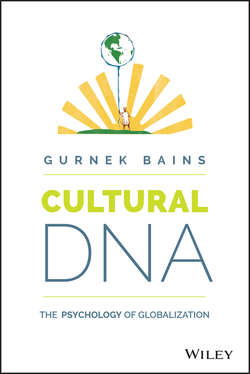Читать книгу Cultural DNA - Bains Gurnek - Страница 4
На сайте Литреса книга снята с продажи.
Introduction
ОглавлениеWe live in a world that is becoming flatter and flatter. Global business and trade, the ease of air travel and the unending flow of information and communication are all combining to create a kind of homogenized, cultural soup into which we are all being inexorably pulled. Whether you are in Beijing, Dubai, or Reykjavík, the ubiquity of global brands and the extent of cultural fusion can make everything around you look and feel comfortingly familiar, if somewhat blandly uniform. Backpackers know this and go to great lengths, admittedly sometimes in a self-defeating, cattle-like manner, to discover corners of the world that our global culture has not yet infiltrated or homogenized.
However, one theme emerges with surprising regularity when you talk to people who have moved to a different culture and lived there for some time – this surface similarity is something of an illusion only held by the transient tourist or business traveler. “You don't realize just how different this place really is once you have been here some time,” people who have deeper experience will often say. While things can appear familiar on the surface, over time a gradual realization sinks in that the deeper psychological and cultural instincts of different societies really are different in profound and nonsuperficial ways. You find that while it might have been easy to engage the culture initially, you eventually hit a permafrost layer through which an outsider cannot penetrate. Over time, you often become aware of just what you don't know or can't comprehend. The initial surface familiarity can be deceptive; just because people in Shanghai wear Gucci or Missoni or carry Prada handbags, it doesn't mean that they are Italians at heart.
The same happens when people from different cultural backgrounds marry or form long-term relationships, as is increasingly the case in our globalized village of a world. Initial assumptions around the similarity of values are tested over time and it frequently begins to dawn on people that their partner's original culture is more ingrained in them than they might have assumed. Subtle differences in attitude and orientation begin to emerge once the fog of early infatuation and surface familiarity lifts. This is not to say that relationships across cultural barriers are doomed or problematic. I myself, being Indian and married to an Australian, know and appreciate the richness that is inevitably a part of cross-cultural relationships. However, both my wife and I have realized over time that I am more Indian than I might have thought in my deepest instincts and actually she is more Australian – despite the fact that both of us on the surface appear to be quintessential exponents of middle-class British mores and values.
The central argument of this book is that while there is much that is common between humans, there are also subtle but profound differences between the psychological instincts of different cultures. Furthermore, the ultimate causes of these differences frequently lie buried in the past – often in the very early period when that part of the world was being settled by the first human migrations. It is this echo from distant times that fundamentally affects each culture's psychological outlook. Like a distant drumbeat, this cultural DNA reverberates through the society, affecting the historical cycles it has experienced, its economic performance, political institutions, business ethos, and just about every other aspect of people's experience. People are not better than one another, or always very different, just sometimes so. As the world globalizes, it is likely that some of these differences will be ironed out. However, it is also likely that we will become more conscious, rather than less, of differences below the surface.
